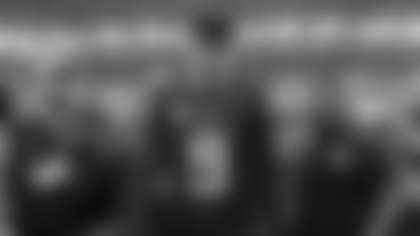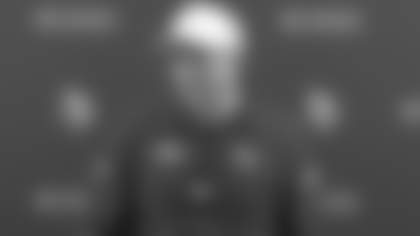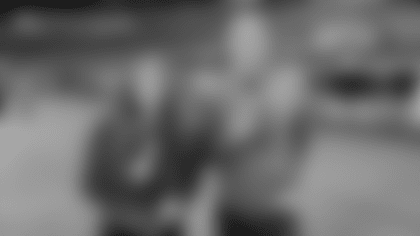Dan Endy, Sr., spends his game days recording the actions of Vikings defenders.
It's only fitting that a commemorative jersey presented to Endy on Dec. 8 before Minnesota dominated Detroit's offense featured a 50.
No, the 90-year-old Endy wasn't going to step in for Vikings linebacker Eric Wilson.
Instead, the No. 50 jersey presented by Vikings Vice President of Football and Media Communications Bob Hagan celebrated Endy's 50 years with the Vikings.
"Dan Endy has been one of those unsung employees for the Vikings," Hagan said. "He has a great history with the Vikings and the NFL. It's been an honor to have him work for the Vikings for 50 years, and we look forward to many more."
Endy said it's been a joy to be on the stats crew with "an amazing group."
"There's been very little turnover. There's been a constancy to it," Endy said. "I think the people that are involved in our crew, it's more of a labor of love. … It's a love of the game and a desire to be involved."
View photos of Dan Endy, Sr. who was recently recognized for his 50 years of service in the Vikings press box.
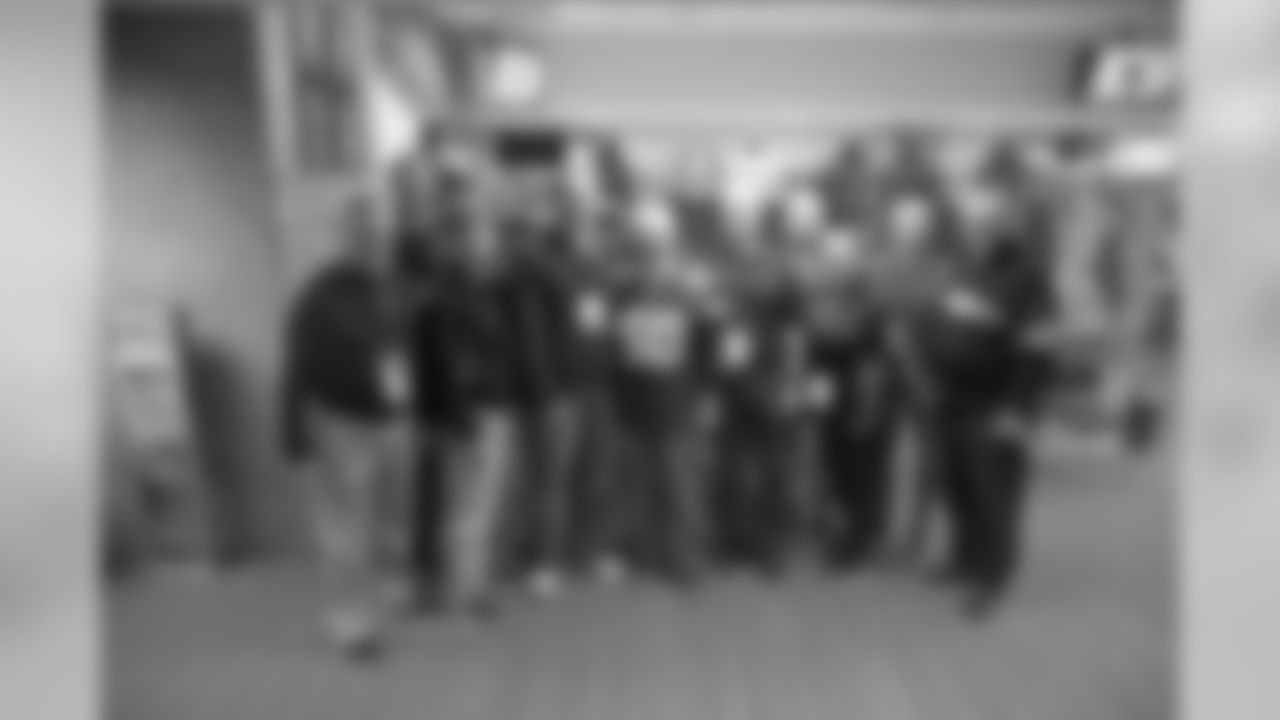


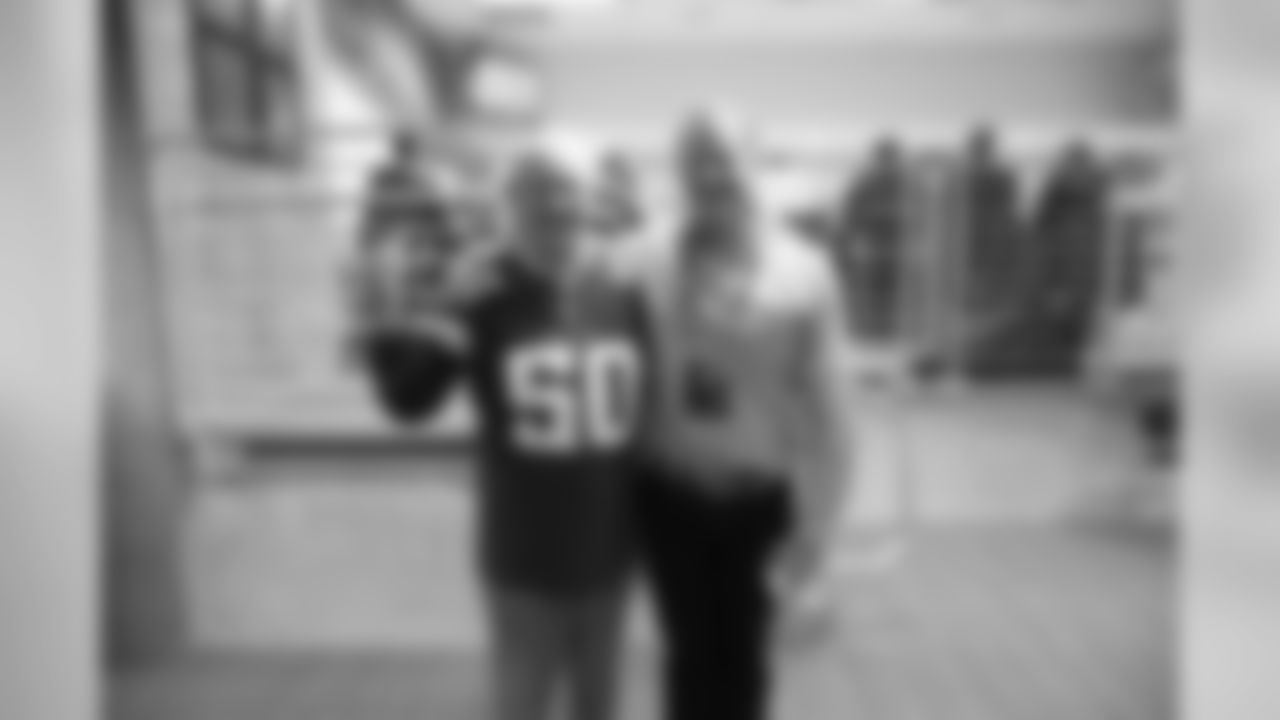


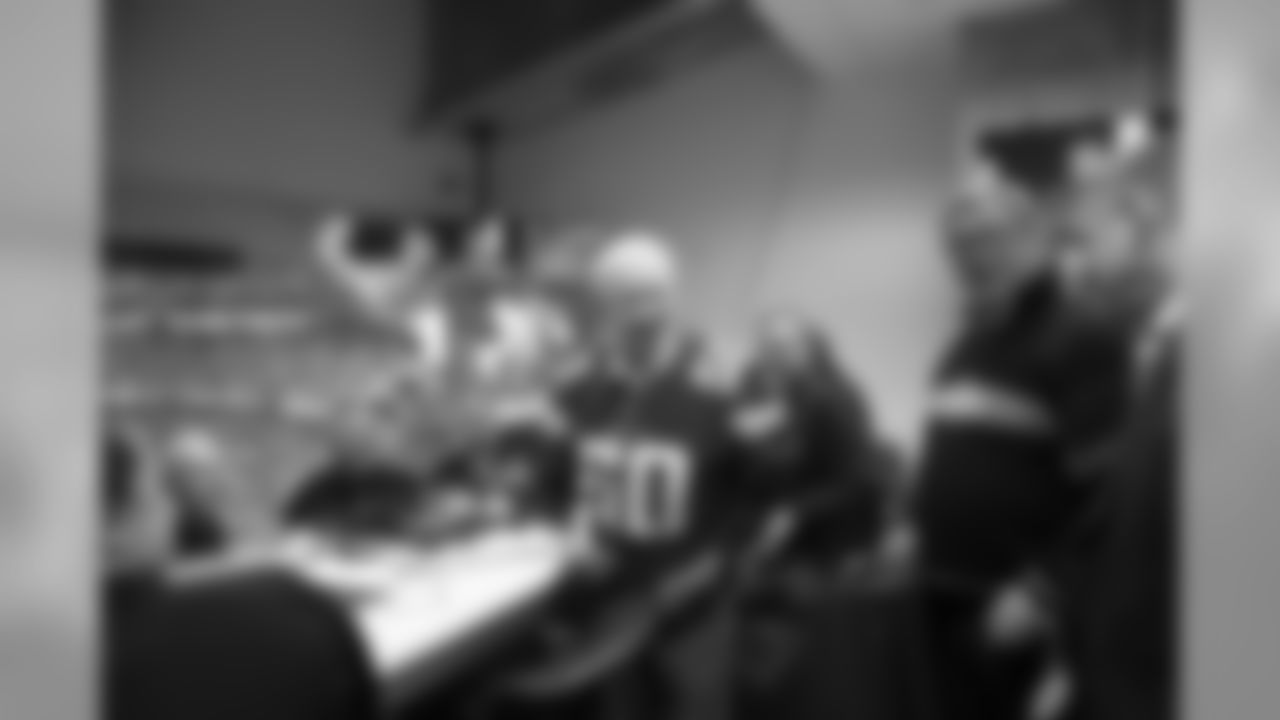
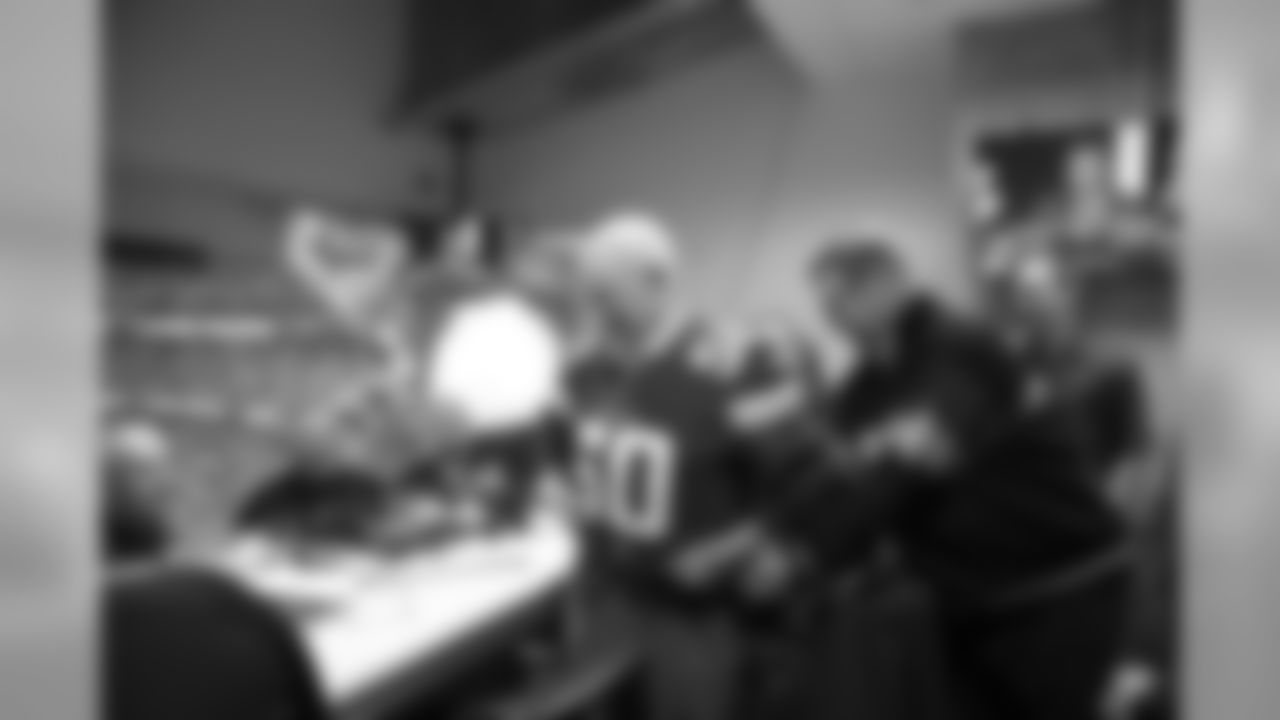




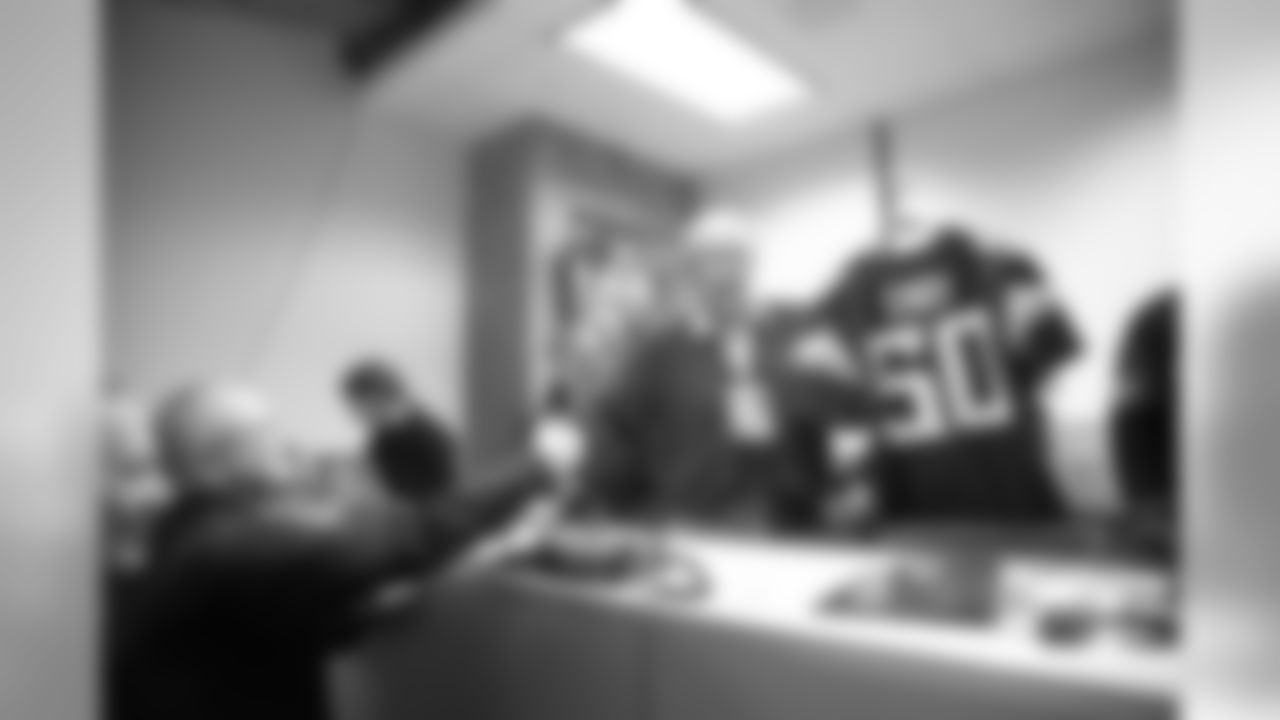
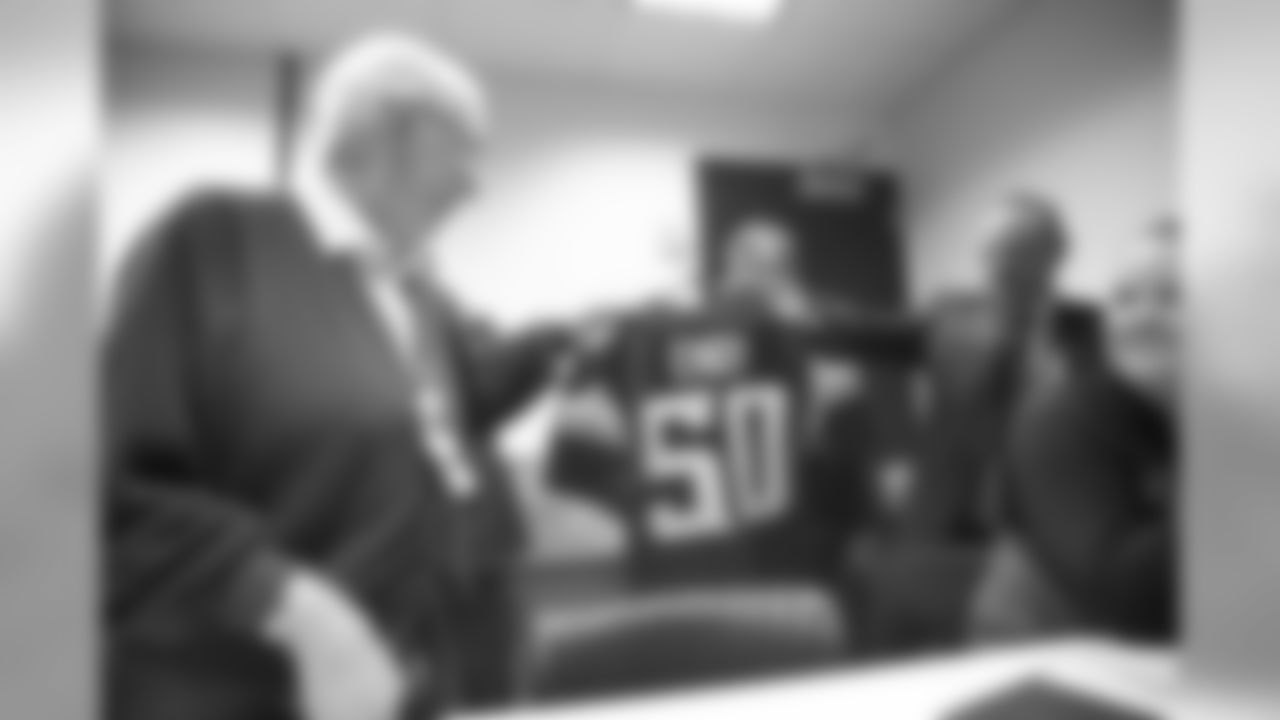
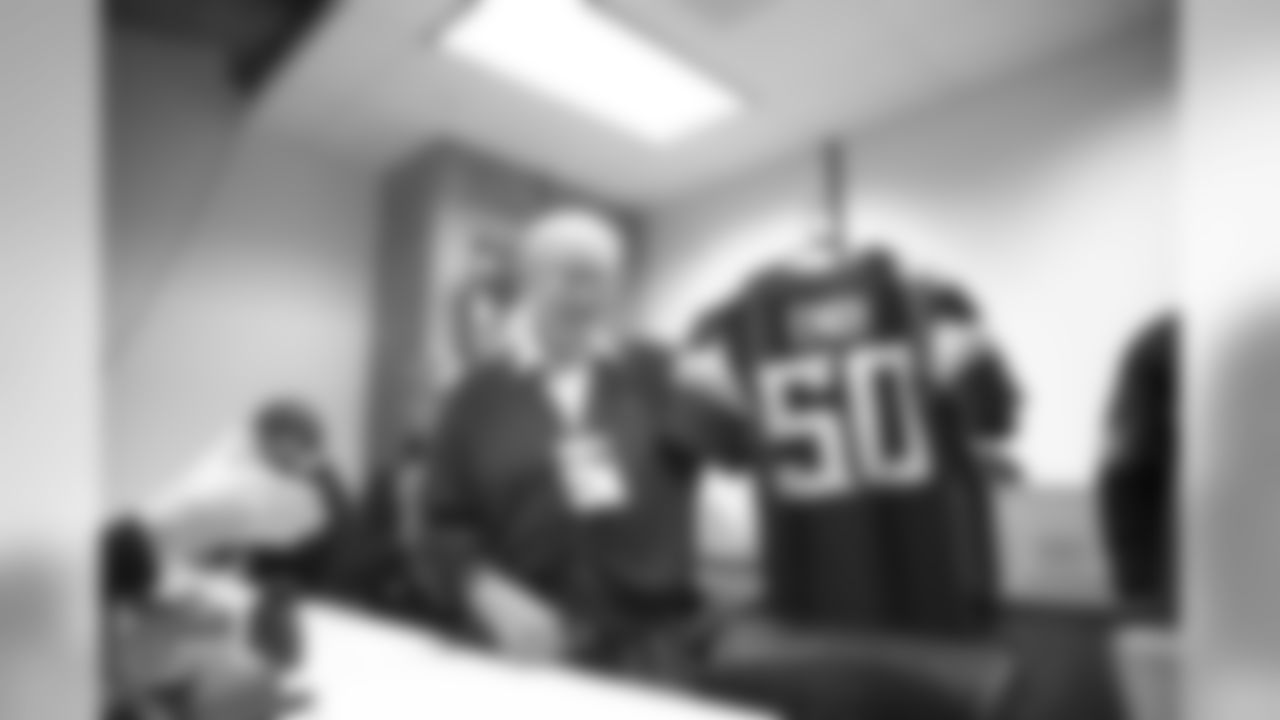
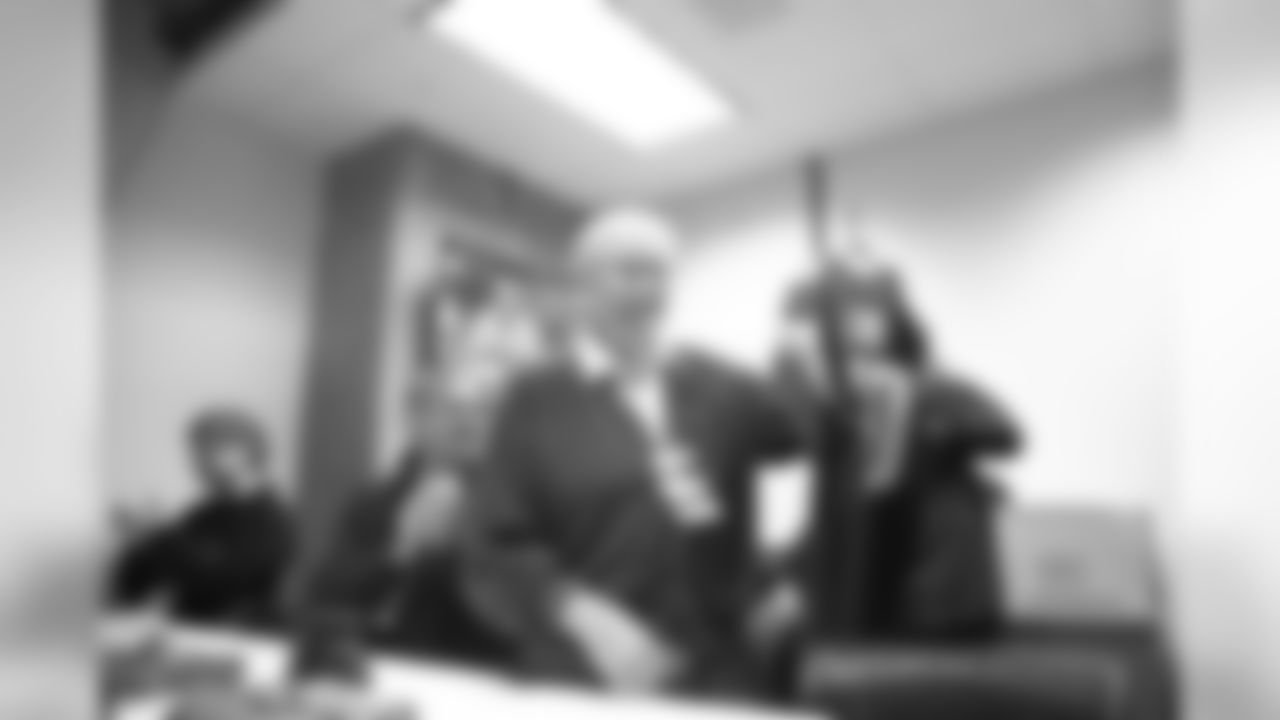

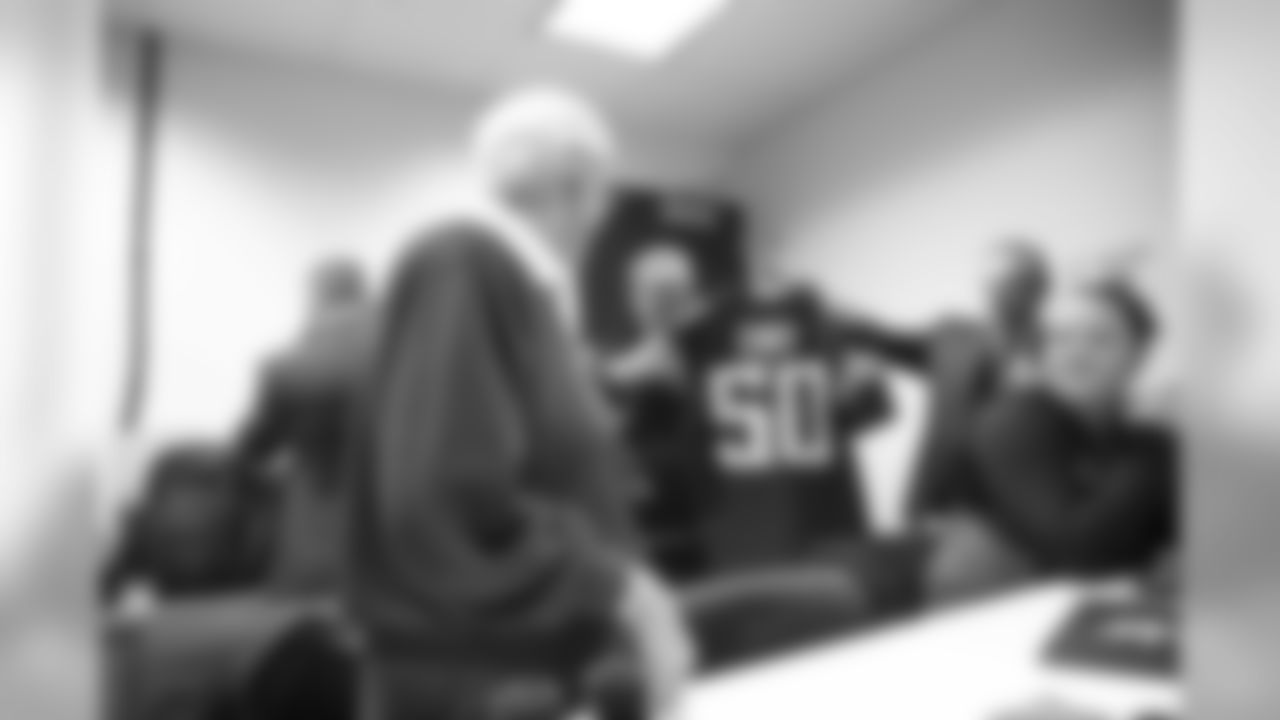
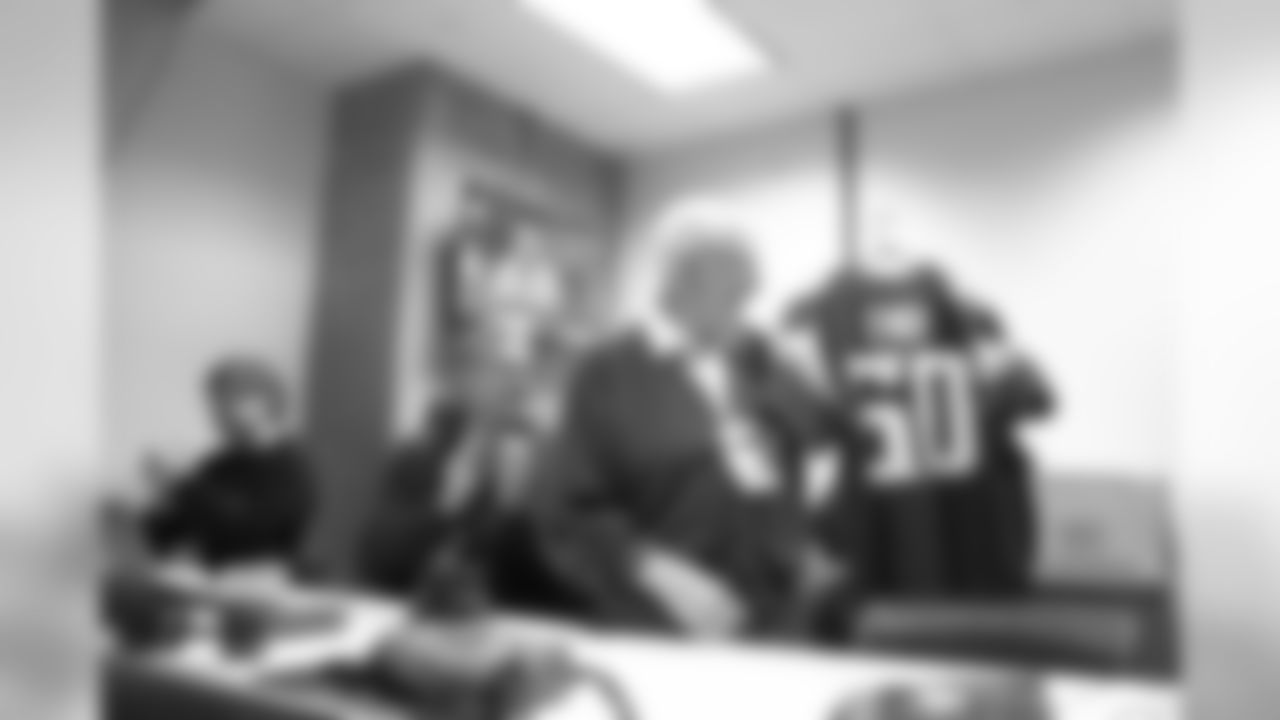

Originally from Philadelphia, Endy moved to Minnesota in February of 1969.
He stopped by the Vikings offices to ask Jim Finks and Bill McGrane, the general manager and public relations director at the time, if they had any opportunities.
The first couple of seasons, Endy handed out play-by-plays in the press box.
His first regular-season game with the Vikings was the day that Joe Kapp tied an NFL record with seven touchdown passes as Minnesota walloped the defending NFL Champion Baltimore Colts 52-14.
That Vikings squad outscored opponents 379 to 133 en route to a 12-2 record, the NFL Championship and an appearance in Super Bowl IV.
The Purple People Eaters era and a decade of dominance built on defensive prowess began.
"At that time, they didn't even do defensive statistics," Endy recalled. "I think it may have been about 1972 when they started that. Merrill Swanson, who was the PR guy at the time, said, 'Would you do defensive statistics?' "
" 'Yeah, I'd love to,' " he replied. "That's when it started, and here I am."

Endy, who records defensive stats by each team and worked Super Bowls XXVI and LII, described the early days as "rather primitive."
"It was not as technologically sophisticated as it is today. I mean we would say, everything was done by name, '[Fran] Tarkenton passes to [Paul] Flatley. Tackle by [Dick] Butkus.' Everything was written down manually, and at the end of the game, there was a guy with one of those old-fashioned mimeograph things, cranking the stuff out.
"It was primitive, but it was effective, I guess," he continued. "It worked for a while, and gradually things changed to the way they are now."
Computerized reports have replaced handwritten or typed play-by-plays, which has made tracking defensive stats "far more sophisticated and far more accurate," Endy said.
"I guess the one thing that's remained constant in my view, the middle linebackers are always the ones that seem to dominate, and that continues today," Endy said. "In the early days, it was Jeff Siemon and Scott Studwell, then Jack Del Rio.
"Those names cropped up more and more, I guess for obvious reasons," he continued. "They're in a position to make more tackles."
Eric Kendricks, the team's current middle linebacker, has led the Vikings in tackles in each of his first four pro seasons and is on track to do so again in 2019.
The volume of tackles by the likes of Siemon, Studwell, Del Rio and Kendricks are certainly impressive, but Endy said he also enjoys watching defensive backs because he thinks it is the most difficult position to play.
"You're out there on an island … and having to turn plays inside or defend passes and make tackles," Endy said. "I just have a lot of respect for those guys, but that's not to diminish the respect you have for a guy like Danielle Hunter."
Hunter coincidentally recorded 3.0 sacks against Detroit, including the 50th of his career to set an NFL record, shortly after Endy received the 50 jersey.
As for the defensive backs, Endy can still visualize the way an opponent fell after a tackle by Joey Browner, as well as standing in amazement of what Antoine Winfield was able to accomplish.
"I was walking back up the ramp at the old Metrodome, Antoine Winfield was right beside me, and I looked over and said, 'This guy is not much bigger than I am,' " Endy recalled. "So many of his tackles, going in there low and hard and hitting these big running backs. I thought, 'How can a guy like that do it?'
"It was a very revealing experience to see all of those giants out there, and Antoine Winfield was a relatively small guy," he continued. "I recall that they listed him as, like, 185 pounds, but he seemed to hit like 285."
There's playing larger than life, and then there's some players whose personalities have jumped off the pages.
"John Randle happens to be a good friend of my son, and I still see him at the golf course," Endy said. "It's interesting, today you see him and he seems like such a mild-mannered, gentle guy, but my recollection of him as a player, he was a bulldog. He was tenacious."
Randle's intense style helped him record 114 of his 137.5 career sacks with Minnesota, and his colorful personality made him a favorite subject of NFL Films.
Endy's contributions to the game run much deeper than quantitative stats.
In addition to his incredible run with the Vikings, Endy also played a role in the qualitative storytelling that helped football become America's most beloved sport to watch.
Endy's pro football career began with his work on highlight films in the 1950s and '60s. He was based in Philadelphia at the time when the league had 14 teams. The seven weekly games were compressed into a half-hour highlight film that was syndicated and shipped across the country on 16-mm film.
The problem, Endy said, was that company's approach was not " 'How well can you do something?', but, 'How cheaply can you do it?' "
Endy started his own company, acquired rights to the Pro Bowl and met Ed Sabol. They hatched out a plan to pursue more NFL rights.
Endy's working connection with announcer Chris Schenkel led to an appointment with NFL Commissioner Pete Rozelle.
"Ed Sabol and I went up to New York, and I schlepped a 16-mm projector — I don't know if you've ever carried one of those, but they're heavy — from Grand Central Station in a cab up to the league office," Endy said. "As an example of the type of work that I thought we could do, we showed him the Pro Bowl film, and he was impressed with it."
Endy and Sabol won the bid for the 1962 NFL Championship between the Green Bay Packers and New York Giants at Yankee Stadium, and Schenkel provided the voice-overs for the film.
One could consider the meeting, the game and the completion of the production as NFL Films' protracted birth.
"It was both financial and an artistic success," Endy said. "We had a premiere at Toots Shor's in New York City. That place is now out of business, but Toots Shor was an old impresario and restauranteur, a big sports guy.
"At that showing, Pete Rozelle said it was the finest football film he had ever seen," Endy continued. "It was called Pro Football's Longest Day, and you can still get copies of that from NFL Films. That was really the launch pad for starting NFL Films at the end of that year."
The acclaim rewarded the leap of faith by Endy and Sabol in purchasing the rights fees for the 1962 title game. Two other companies that had bid on the championship game made proposals to start NFL Films, but the NFL selected the bid presented by Endy and Sabol.
NFL Films has been owned by the NFL ever since, providing fans with a signature storytelling built on unique access, vivid imagery and colorful characters.
"It played a really important role, and to their credit, NFL Films always did an excellent job," Endy said. "It was just the opposite of the old company. We didn't worry about cost. It was not what it cost, it was how well you could do it. They set some standards that still exist."





